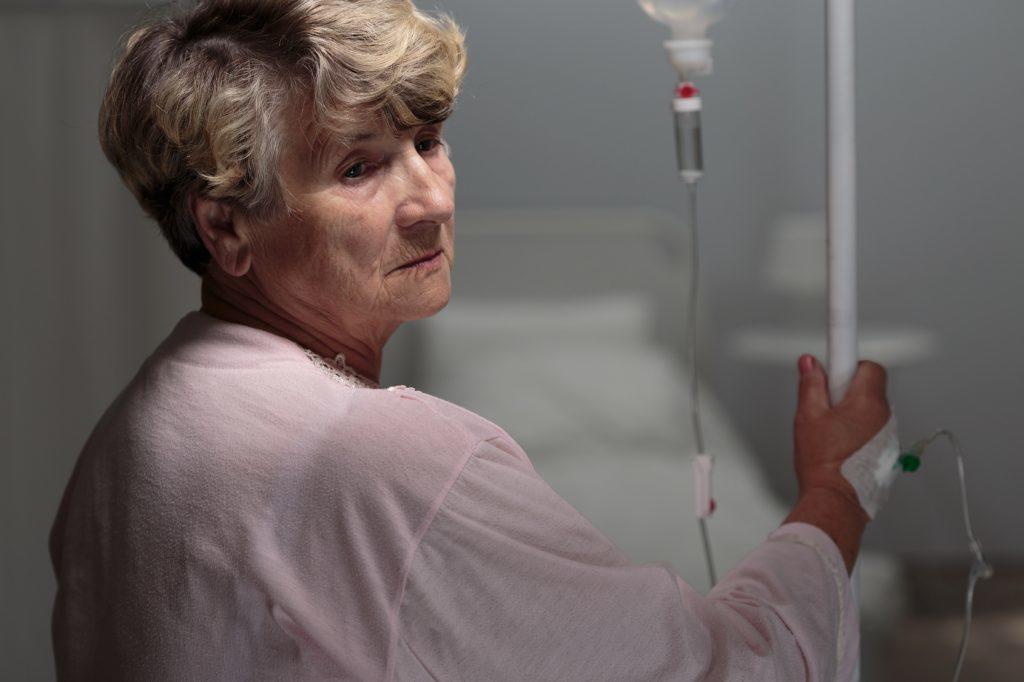New Test Helps Identify Inpatients Struggling with Mental Health
by Graham Strong
 A new screening tool tested at the Health Sciences Centre will help health care professionals identify inpatients who may be struggling with their mental health.
A new screening tool tested at the Health Sciences Centre will help health care professionals identify inpatients who may be struggling with their mental health.A new screening tool at the Thunder Bay Regional Health Sciences Centre is designed to identify inpatients who may be struggling with mental health issues. The pilot project, tested in the 1A unit this past spring, screened patients at admission by asking four simple questions. The test was so successful that it will be rolled out to other units starting this fall.
“We wanted to complete a pilot in one unit first before bringing it to other units to make sure it was useful for identifying patients who may need help,” said Dr. Peter Voros, Director of Adult and Forensic Mental Health.
When a patient is admitted to a unit, nurses routinely test vital signs and do what’s called a medical history to understand past health issues. Previously, there were some mental health questions asked during the medical history, but this new set of questions – call the Patient Health Questionnaire-4 (PHQ-4) – is designed to score patients using a point system from 0-6 in both anxiety and depression. Patients that score a 3 or higher in either category are flagged for the patient’s physician.
However, a high score doesn’t necessarily mean there is a major problem. “All a positive screen means is that someone needs to ask more questions,” said Dr. Voros. The physician decides the next appropriate steps including talking with the patient to learn more, possibly referring back to a family physician for follow-up on discharge, or making a referral to a psychiatrist, if needed.
The real strength of the screening tool is that it takes something that can be subjective – assessing a person’s mental health – and makes it easier for any health professional to determine when a patient may need some mental health care. It helps ensure patients get the right care they need, when they need it.
“This screening tool is standardized and it’s supported by research that says within a general population, if you score 3 or higher, there’s a chance that you may be struggling,” Dr. Voros said.
The results from the pilot project were in line with expectations, he said. Of the 39 patients screened, five scored positive for anxiety and depression. Two were already receiving treatment and two were able to get a referral to a psychiatrist as a result of this new screening tool. (The fifth had already been transferred to long-term care, though a note about the positive score was forwarded to the care facility.)
The new initiative came as a direct result of the Strategic Plan 2020, which highlights mental health as a key area of focus. One of the goals is to improve mental health assessment within the patient history, which this screening tool has demonstrated it can do.
Dr. Voros said that the screening tool will be added to the admission process in all units by fall 2017. Currently, other supports are also being put into place including recruiting more psychiatrists and creating a Consultation Liaison Service. This service will be coordinated by a mental health nurse who will be able to provide an intermediate level of care between referring physicians and psychiatrists to streamline the process even further and ensure that patients are getting the right level of care.
With all of these pieces in place, the result will be a more proactive approach to helping inpatients at the hospital get the help they need for any mental health issues they are experiencing.
“It’s an opportunity for us as health care practitioners to make sure we’re asking the right questions and identifying where there may be difficulties,” Dr. Voros said.